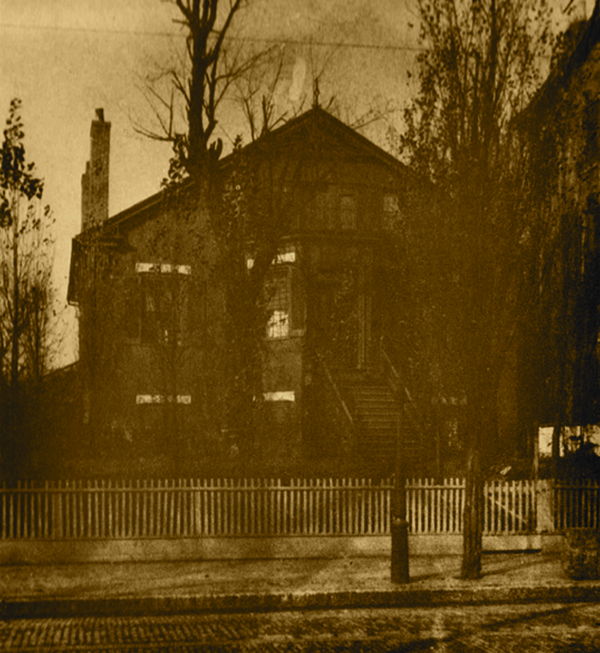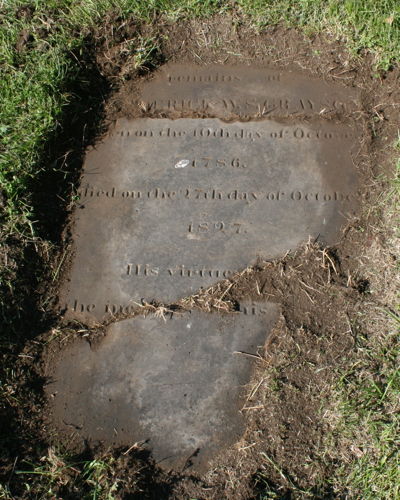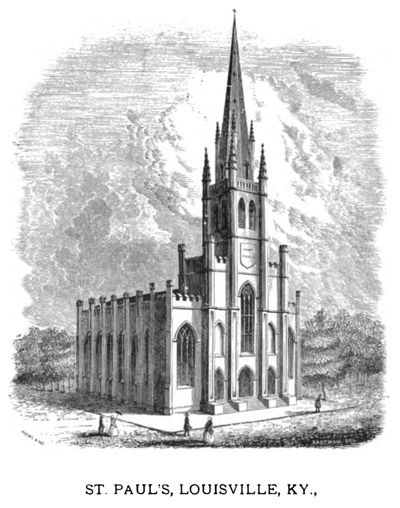
The following article by Charles Hartley was published on 20 September 2015. It is archived here for your reading enjoyment.
Frederick William Spence Grayson was in Bullitt County as early as 1803 when he was appointed as the county's second Court Clerk, a job he would hold for a dozen years. He appears to have grown up in Bardstown where his father was Nelson County's Court Clerk. In fact, it appears that Fred was postmaster in Bardstown as early as July 1800.
During his first half-dozen years as clerk, Fred Grayson was also preparing to become a lawyer, and he was admitted to the bar in March 1810. He was civic minded; serving as a trustee for the Bullitt Academy in 1808, and as a Shepherdsville town trustee in 1814.
He was also quick to see opportunities for financial advancement. When John W. Beckwith expressed an interest in buying land just downstream from Shepherdsville for a forge operation, Grayson offered to provide half of the money needed to buy the land. Beckwith would oversee the construction of the forge, Grayson remained a financial partner.
It appears that Fred Grayson became acquainted with David L. Ward, an important business man and operator of part of the saltworks at Mann's Lick, for by June 1814 he had married Ward's daughter Sarah. As Fred remained Bullitt County's clerk until at least March of 1815, it is likely that he brought his bride to live in Shepherdsville.
However, Sarah was the apple of her father's eye, and in 1816 he purchased a fine brick house for her in Louisville as a present. The house was built on a coveted site in early Louisville, one of two elevations marked on the early plats. It was actually an ancient Indian mound surrounded by primeval forest on most sides, with a great pond on the left.
As the city grew up, and streets were laid out, the boundaries around the property ran from Center Street (now Armory Place) westward to halfway between Sixth and Seventh Streets, and from Walnut Street (now Muhammad Ali Blvd) northward to Grayson Street (now Cedar Street). The modern map above shows the general location of the site.

Reuben T. Durrett, then president of the Filson Club, wrote in 1893 in his volume titled The Centenary of Louisville, that "this mound, though not more than fifteen feet in height when first known, had a circumference of more than one hundred feet at its base."
In describing the nearby pond, Durrett wrote, "This pond extended from Walnut almost to Green (Liberty Street today) and from Sixth to Center streets, and was one of the attractions of the city in early times." He went on to say, "The ground on which the old Grayson House stands is considerably above the street level, and is the only survival of this mound."
The five-acre site was purchased by John Gwathmey in 1810, and he built the house for his family. It had a basement that contained the kitchen and servant's quarters, a first and second floors, each with four rooms with large halls on each floor. The original structure was built of fine brick, likely imported on keelboats down the Ohio.
Gwathmey sold the house and lot, along with other properties, to Ward in 1816.
After Fred and Sarah Grayson moved into their fine Louisville home, he became active in civic affairs, becoming a Louisville trustee in 1819. He developed a fine law practice which eventually led to his appointment in 1825 as Kentucky's Attorney General. A year later, he was tendered an appointment as a judge on the Kentucky Court of Appeals.

In later years, Sarah Grayson would remark that her happiest times at the house were before the great pond was filled in. The pond had been a favorite place for folks to gather, and many were upset when Fred Grayson put his servants to work filling the pond with part of the mound next to the residence. In the process of digging, many relics of the past were unearthed.
Grayson may have filled in the pond as a precaution against disease. During Louisville's early years, frequent bouts with cholera and typhoid fever were blamed on stagnant water and resulting bad air.
Fred Grayson himself died in October 1827, in his forties, perhaps as a result of one of these diseases.

He and Sarah had no children. It is said that she lived the rest of her life in that house, selling off parts of the five-acre lot at various times. Part of it became the first site of the St. Paul Episcopal Church in 1839, which was built facing Sixth Street with its southern boundary running along Walnut Street. Sarah Grayson would be a part of this church for the rest of her life.
The church burned in 1894, fourteen years after Sarah died. By that time the house was the home of the family of J. C. Baumberger, the Swiss Consul for this region. Members of his family continued to live there until at least 1940 when his daughter Cora was listed there in that year's census, living at 432 South Sixth Street.
Today the house is gone. In its place stands a State Office Building. The fine brick home that stood there for more than 130 years is but a distant memory, and along with it are the memories of Frederick and Sarah Grayson, and of that Indian mound of so long ago.
Copyright 2015 by Charles Hartley, Shepherdsville KY. All rights are reserved. No part of the content of this page may be included in any format in any place without the written permission of the copyright holder.
The Bullitt County History Museum, a service of the Bullitt County Genealogical Society, is located in the county courthouse at 300 South Buckman Street (Highway 61) in Shepherdsville, Kentucky. The museum, along with its research room, is open 10 a.m. to 4 p.m. Monday through Friday. Saturday appointments are available by calling 502-921-0161 during our regular weekday hours. Admission is free. The museum, as part of the Bullitt County Genealogical Society, is a 501(c)3 tax exempt organization and is classified as a 509(a)2 public charity. Contributions and bequests are deductible under section 2055, 2106, or 2522 of the Internal Revenue Code. Page last modified: 12 Sep 2024 . Page URL: bullittcountyhistory.org/memories/grayson.html